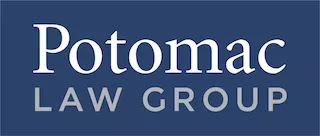This is the fourth installment of a series of client Alerts that focus on topic areas included in the Infrastructure Investment and Jobs Act (HR 3684) (the "IIJA") . The IIJA provides new or enhanced funding for many infrastructure programs, including transportation infrastructure, transportation technology, electric vehicles, water infrastructure, energy, western water infrastructure, broadband infrastructure, resiliency, environmental remediation, and other programs. The IIJA is being called the most significant bipartisan investment in the nation's infrastructure in decades.
This alert is an overview of important provisions in the IIJA that provide incentives for technologies that will transform the future of transportation. A key take-away here is that the enormous funding and other policy decisions will largely flow through traditional entities: federal, state and local governments and transportation agencies. These traditional entities will soon face significant increases in the volume and complexity of decisions before them. Due to both legislative requirements and practical need, we anticipate opportunities for stakeholders to engage with the decision makers in a meaningful way. Proponents that are thoughtful in developing their ideas and projects have historically had advantages in seeking opportunities and advancing policies.
Opportunities for States and Communities to Promote Transportation Technological Solutions
The $1.2 trillion IIJA will provide innovative states, including our home state of Massachusetts, an opportunity to both address longstanding infrastructure deficiencies and take important steps to a new transportation future. Given the breadth of priorities addressed in the legislation, the U.S. Department of Transportation ("US DOT") and state Departments of Transportation will shortly be busy making sure that the implementation of the IIJA measures live up to their promise. Although the implementation will require tremendous efforts just to complete more familiar projects such as rehabilitating scores of aging and dilapidated bridges, forward looking states will look even further into the future and determine how technology can provide answers to growing transportation problems. Autonomous vehicle technology is just one example of a technology that should be further promoted under the IIJA. Since Massachusetts Governor Baker's 2016 Executive Order and initial City approvals in 2016-17, autonomous vehicle companies have been testing and developing their transformative technologies in Boston's South Boston Waterfront. Intelligent sensor-based infrastructure, hyperloop efforts, and shared-use mobility initiatives are other examples of transportation technology that should benefit from IIJA funding, research, or other provisions.
Every day, deep thinkers and skilled researchers at institutions like the Volpe Research Center and MIT's Urban Mobility Lab are pondering how this technology can help us (and hopefully not harm us). Soon, building upon forward-looking (but sometimes not long-lasting) study efforts of the past, private, academic, and public sector leaders will more regularly need to bring all of this brainpower together help their communities reach the promise of new technology while avoiding the potential pitfalls. A near-term challenge for policymakers is to determine how the IIJA can best advance new technology that exists or is about to exist. For example, just recently, President Biden noted that some of the $17 billion designated for ports in the IIJA will be used on data sharing solutions to address the supply backlog.
The IIJA includes a number of provisions that innovative states and communities can utilize to take advantage of the economic, climate, and mobility benefits of new technology, including:
Sections Authorizing Significant New Funding and Research Capacity for New Transportation Technologies, Such as Autonomous Vehicles and "New Mobility" Shared Services
- Section 25005 creates a new SMART grant program under the US DOT that includes funding for activities such as planning, permitting, information technology work, real property acquisition, construction, mitigation, and acquisition of vehicles. This new SMART grant program is funded at $100 million for each of the five fiscal years "beginning after the" date of enactment of the IIJA. (SMART is an acronym for Strengthening Mobility And Revolutionizing Transportation Grant Program.) States, political subdivisions of states, Tribal governments, public transit agencies and authorities, public toll authorities, metropolitan planning agencies, and a group of two or more of these entities may apply. The grants may be used for projects that demonstrate at least one of the following: coordinated automation; connected vehicles; intelligent, sensor-based infrastructure; systems integration; commerce delivery and logistics; leveraging use of innovative aviation technology; smart grid; and smart technology traffic signals.
- Section 13005 creates the Emerging Technology Research Pilot Program under the US DOT funded at $5 million for each of the next five fiscal years (FY22-26). The pilot program will, among other items, fund research and development "regarding the impacts of connected, autonomous, and platooned vehicles on pavement and infrastructure performance" and research "to improve transportation infrastructure design in anticipation of increased usage of automated driving systems and advanced driver-assistance systems."
- Section 13006 expands the objectives of the US DOT Highway Research and Development Program to include engaging "with public and private entities to spur advancement of emerging transformative innovations through accelerated market readiness; and... consult frequently with public and private entities on new transportation technologies." The section also authorizes $20 million for each of fiscal years 2022 through 2026 "to accelerate the deployment and implementation of advanced digital construction management systems."
- Section 13006 also expands the Advanced Transportation Technologies Deployment Program within USDOT to include "Innovative Mobility Deployment." The US Secretary of Transportation is directed to "provide grants to ... deploy, install, and operate advanced transportation technologies to improve safety, mobility, efficiency, system performance, intermodal connectivity, and infrastructure return on investment." The section includes new authority for funding for advanced parking technologies, high occupancy vehicle toll lane technology, and shared-used mobility applications. States, local governments, transit agencies, and metropolitan planning organizations are among the eligible applicants for grants.
- Section 13006(c) directs the U.S. Secretary of Transportation to create the Center of Excellence on New Mobility and Automated Vehicles within one year. The Center shall research "the impacts of new mobility and highly automated vehicles on land use, urban design, transportation, real estate, equity, and municipal budgets" and shall issue a report to Congress within one year of being created. The section defines "new mobility" as "shared services such as ... docked and dockless bicycles...docked and dockless electric scooters and transportation network companies." The Center will coordinate research on the "impacts of new mobility and highly automated vehicles" and report to Congress on research progress due one year after enactment. The section calls for partnerships with public or private research entities and institutions of higher education.
- Section 11129 directs the US DOT to update the Manual on Uniform Traffic Control Devices within 18 months after the enactment of the IIJA and to continue to update the manual no less than every four years thereafter. This section also mandates new standards for electric vehicle charging station projects funded under the Title to provide "non-proprietary charging connectors...and..open access to payment methods that are available to all members of the public." Section 11135 also requires that the initial update include protection of vulnerable road users, the safe testing of automated vehicle technology, appropriate use of variable message signs, and minimum retroreflectivity of traffic control devices and pavement markings.
- Section 24219 requires the Administrator of the National Highway Traffic Safety Administration to "not later than 180 days after the date of enactment of [the IIJA], expand vehicle-to-pedestrian research efforts focused on incorporating bicyclists and other vulnerable road users into the safe deployment of connected vehicle systems" and file a report with Congress within two years of the date of the IIJA enactment.
- Section 11504 requires the Secretary of US DOT to initiate a study within 60 days of the enactment of the IIJA on the "existing and future impacts of self-driving vehicles to transportation infrastructure, mobility, the environment, and safety." Among the study topics are "infrastructure improvement needs that may be necessary for transportation infrastructure to accommodate self-driving vehicles...and...the impact of self-driving vehicles on mobility." The Secretary is required to consult with stakeholders, such as private sector stakeholders, state departments of transportation, metropolitan planning organizations, and self-driving vehicle producers, manufacturers, and technology developers. A report is due to Congress no later than one year after the study is initiated.
Sections Involving Emerging Forms of Transportation, such as Hyperloop Technology
- Section 250008 codifies the Nontraditional and Emerging Transportation Technology Council, which shall be a multi-transportation agency body that is required to "identify and resolve jurisdictional and regulatory gaps... associated with nontraditional and emerging transportation technologies, modes, or projects" to promote this new technology and to reduce regulatory impediments to the growth of such technologies. The Council shall be established no later than 180 days after the date of the enactment of the section.
- The IIJA authorizes $5 billion over the next five years Consolidated Rail Infrastructure and Safety Improvement ("CRISI") grants, which fund projects that improve the safety, efficiency, and reliability of intercity passenger and freight rail. This is significant expansion of this program, historically used by eligible applicants such as states, railroads, and communities for planning and construction activities. Section 22303 of the IIJA expanded the eligible projects to include "[r]esearch, development, and testing to advance and facilitate innovative rail projects, including projects using electromagnetic guideways in an enclosure in a very low-pressure environment."
Sections Focusing on Combating Transportation Caused Climate Change Through Electric Vehicle Charging, and Carbon Reduction
In addition to the new funding and research mandates for new transportation technology, the IIJA includes significant funding for electric vehicle charging activities. The ability of states to meet climate change goals is dependent upon a rapid expansion of electric vehicle charging capabilities. The potential for successful development of autonomous vehicle technologies is also closely aligned with the need to rapidly expand electric vehicle charging.
In general, the IIJA allocates $7.5 billion to enable the U.S. to expand its electric vehicle infrastructure and to further expand the use of alternative fuels in transportation including hydrogen, propane, and natural gas. More detail on these programs is provided in Part #2 of this series, "Transportation Electrification". States and communities, and metropolitan planning organizations are among the eligible entities that can apply for this funding, which will also focus on the utilization of public private partnerships. Agencies charged with implementing these programs are already beginning to move forward. For example, the Federal Highway Administration recently issued a Request for Information regarding the implementation of two programs: the National Electric Vehicle Program or EV Charging Program which "will provide funding to the States to strategically deploy EV charging infrastructure" and the Charging and Fueling Infrastructure Program "to strategically deploy publicly accessible EV charging infrastructure and hydrogen, propane, and natural gas fueling infrastructure in designated alternative fuel corridors."
- Section 11403 establishes a carbon reduction program at the US DOT to reduce transportation emissions. The section calls on states to establish "carbon reduction strateg[ies]" that, among other goals, "support efforts to reduce transportation emissions; ... identify projects and strategies to reduce transportation emissions, which may include projects and strategies for safe, reliable, and cost-effective options...to reduce traffic congestion by facilitating the use of alternatives to single-occupant vehicle trips, including public transportation facilities, pedestrian facilities, bicycle facilities, and shared or pooled vehicle trips." Funds apportioned to states may be "obligated for projects to support the reduction of transportation emissions, including" projects such as "advanced transportation and congestion management technologies", projects "for the deployment of infrastructure intelligent transportation systems capital improvements and the installation of vehicle-to-infrastructure communications equipment," and "on-road and off-road trail facilities for pedestrians, bicyclists, and other non-motorized forms of transportation."
Who to Watch
The US DOT and its respective agencies will have an opportunity to look to the future in implementing the IIJA. They will be assisted in the gargantuan task of implementing the IIJA by a newly announced White House implementation coordinator. The IIJA funding will be released through a combination of grants administered at the federal level and funding provided directly to the states. Those involved in developing new technologies to address longstanding transportation challenges will want to engage with state and local governments, metropolitan planning organizations, transportation districts, tribes and US territories to encourage them to use funding and resources on forward-looking priorities.
When
Most of the initiatives in the IIJA will be administered over a five-year period. During this time, priorities may change, especially as new technologies become more developed. In the near term, many of the programs and priorities face a legislative deadline for specific actions within 180 days from enactment. Following President Biden's signature on November 15, 2021, the 180-day deadlines will arise on May 14, 2022. Some new programs, such as new grant programs, may take some time to design and administer. In a recent Office of Public Affairs release, the US DOT noted that some "new & expanded competitive grant programs in the Bipartisan Infrastructure Law (BIL) [are] anticipated to launched over the course of the next year." Potomac Law Group attorneys will be on the watch for Notices of Funding Opportunities that are released by the US DOT and other agencies. In addition to funding, the legislation includes a number of study efforts that also come with deadlines for reports to Congress. As noted above, some of these reports will be made within one to two years.
The content of this article is intended to provide a general guide to the subject matter. Specialist advice should be sought about your specific circumstances.



